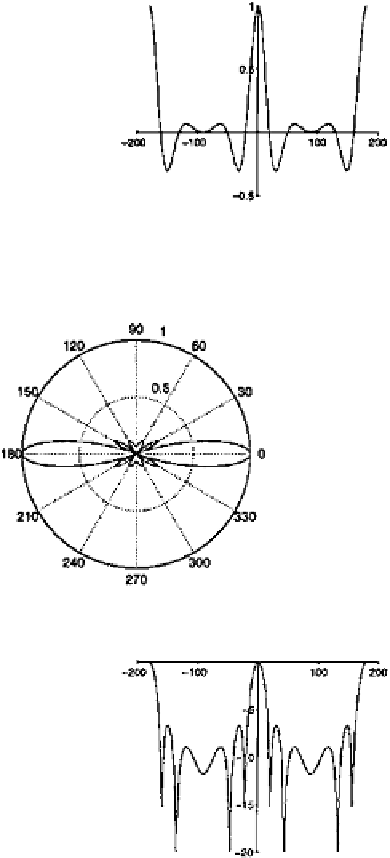Graphics Programs Reference
In-Depth Information
16 Polar Plots
When displaying information which varies as a function of angle, it is
often beneficial to use a polar diagram in which conventional (
x, y
) values
are interpreted as angle and radius. Compare the following two displays.
First the conventional (
x, y
) plot:
clf
t = linspace(-pi,pi,201);
g = sinc(2.8*sin(t));
plot(t*180/pi,g)
zeroaxes
(The command
zeroaxes
is part of the companion software to this
topic.) Then the polar diagram indicating the directional variation in
the quantity
g
:
clf
polar(t,g)
Plots such as these are sometimes displayed in decibel units:
gdb = 10*log10(abs(g));
plot(t*180/pi,gdb)
zeroaxes
But the polar diagram in this case gives rubbish because it is interpreting
the negative decibel values as negative radii:

